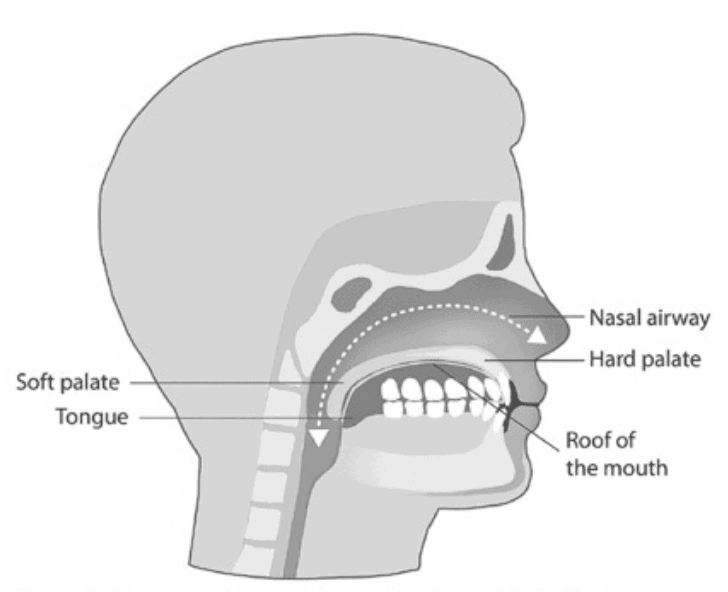A variety of medical investigators sought to understand how the new urban and industrial nature of modern life was changing our bodies. “As far as we can discover, the changes in jaws with new diets and urbanization were first noticed and recorded in the 1830s”, report Kahn and Ehrlich (2018).
Kahn and Ehrilch call this “oral-facial health.” Their description of oro-facial posture is a new and startling insight. in the hundreds of discussions of cervical biomemechanics and postural studies I have read, no mention was ever made of the importance of oro-facial posture. Oro- facial posture is an effective, easy, and natural remedy we can implement at any time in order to respond more adaptively to the stressors of trauma or mismatch.
What is posture?
It is surprisingly natural and easy to do and feels good too. Good posture starts from within and fundamentally means that we literally bring ourselves together in a process of centration to reassure and stabilize the body.
The postural system opposes and balances the dynamic system, the large, superficial muscles of the body, often in the extremities, that create long force arms and generate speed and power. The dynamic system literally pulls us apart, as in a leap, a throw, or a lift. The body opens up as fully as possible to express itself in dynamic activities.
In contrast, postural muscles are deeper, smaller, and are closer to the bone, bound in tightly in the joint. The postural system of intrinsic scapular muscles, for example, actually create the structure we know of as the rotator cuff and ensure centration of the mobile and complex shoulder joint. The postural system is deep, sensitive, and operates largely subconsciously. The muscles of the postural system ensures that our joints can self-organize, providing structural balance and stability for the optimal delivery of force.
The postural system is the basis for all movement of the body. However, the postural system can easily stiffen parts of the body to ensure this stability. If unrelieved by diverse movement, this stiffening response can become maladaptive. The postural system is also very responsive to emotional and other trauma, kicking in with protective responses as part of the instinctual defense cascade.
What is oro-facial posture?
Oro-facial posture includes the face, throat, neck and jaw. These systems come together for improved stability and sensory feedback.
- The mouth is shut. The lips and teeth are touching lightly. The jaw is closed in a comfortable resting tone.
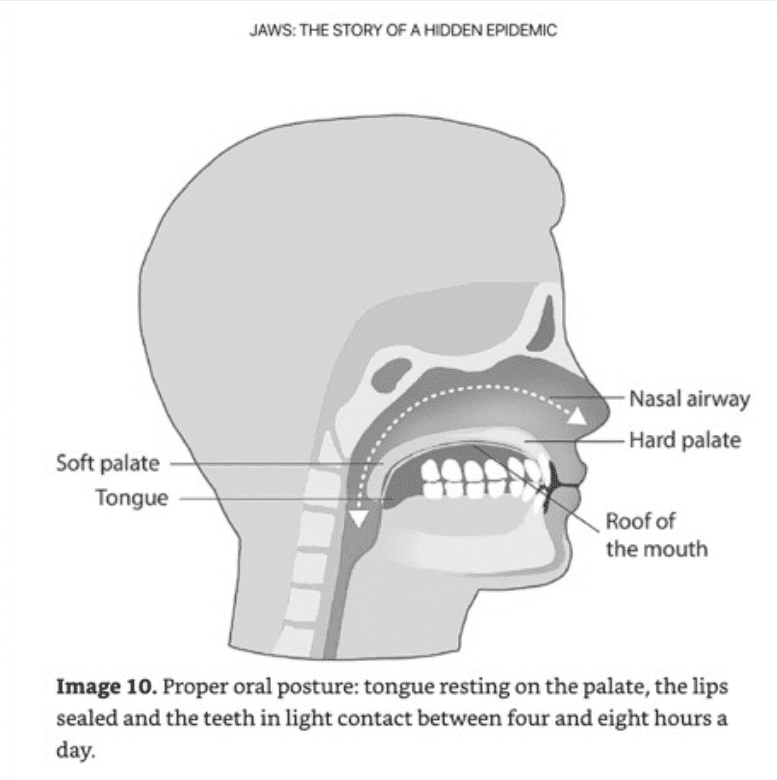
- We breathe through the nasal airways, not the mouth.
- The radiator-like sinuses pervade the face and provide a great deal of reinforcing interoceptive sensation as the air moves through them, directing our attention towards our the social recognition system of the face. The face is an important tool for sensing and interpreting our social-emotional environment. This is done through its mirroring responses to visual and other sub-verbal signals coming from others. Knowing ourselves helps us to know others. Posture is about this special kind of self- awareness.
- The tongue rests upon the upper palate, behind the upper incisors.
- It touches both the upper and lower palates of the mouth. This also helps remove it from potential airway obstruction as in poor oro-facial posture, with the mouth hanging open. The tongue is the largest muscle of the area and by far the most sensitive. Activated tonically in this way it provides structural support and responsive feedback.
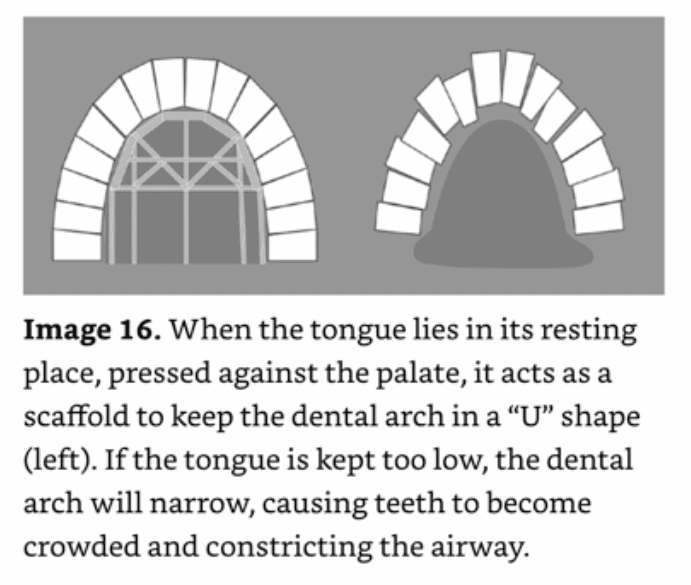
- Regarding the importance of the tongue, it is a major muscle of the axial skeleton, located in the deep core myofascial continuity that we will discuss more below.
- Kahn and Ehrlich state: “When the tongue lies in its resting place, pressed against the palate, it acts as a scaffold to keep the dental arch in a “U” shape (left). If the tongue is kept too low, the dental arch will narrow, causing teeth to become crowded and constricting the airway” (Kahn and Ehrlich 2018).
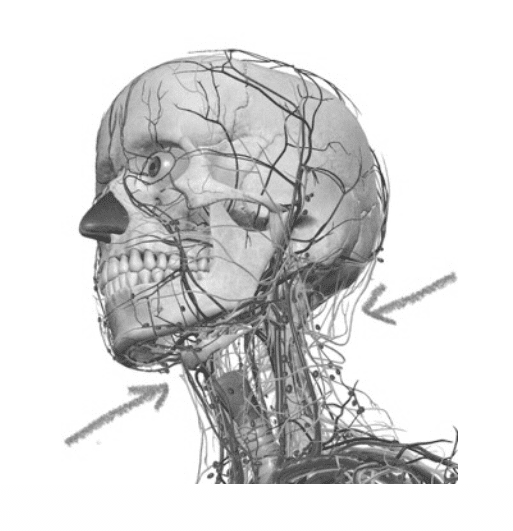
- Oro-facial posture helps to tone the front of the neck.
- This gentle boost in resting tone provides a balancing influence on the chronically tight back of the neck. In the slouch and the head forward position the heavy head hangs from the taught muscles of the back of the neck and shoulders. The system is of course designed for balance. The head should rest upon the spine in a responsive state of poise. We can restore this balance in large part by tucking the chin a little bit, and creating a sense of awareness as the jaw, throat, and neck touch.
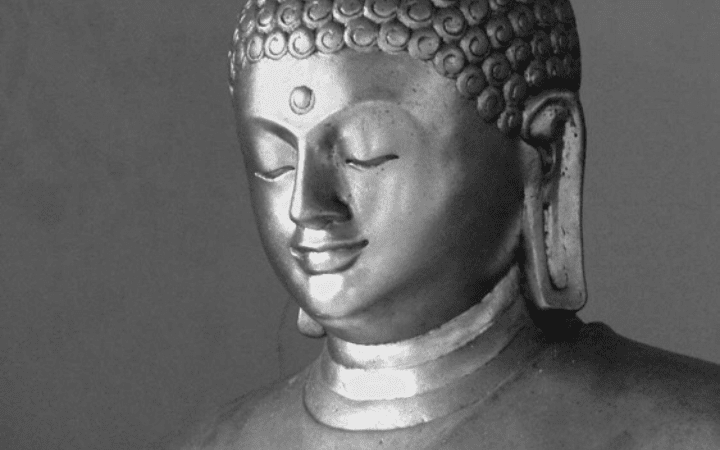
- Finally, the smile is an important part of pro- facial posture.
- A very gentle, almost imperceptible “buddha” or “Mona Lisa” smile acts as a sort of mechanical linchpin, working down through the hyoid bone and connecting with the rest of the postural chain as it runs down the body to the feet. A gentle activation of the facial muscles in the form of a smile brings the face together into a gentle pucker. The smile feels good for a reason. It is proof that our fundamental nature is
friendly .
- A very gentle, almost imperceptible “buddha” or “Mona Lisa” smile acts as a sort of mechanical linchpin, working down through the hyoid bone and connecting with the rest of the postural chain as it runs down the body to the feet. A gentle activation of the facial muscles in the form of a smile brings the face together into a gentle pucker. The smile feels good for a reason. It is proof that our fundamental nature is
At the current very advanced stage in the epidemiological arc, dysfunctions that were once new and alarming have now been normalized and institutionalized medically, which in turn has become iatrogenic. This is reflected in the orthodontics profession by its focus on symptoms rather than causes and its institutional hostility to a shift towards innovative causal interventions in young children.
Kahn and Ehrlich cite many different studies from a number of different time periods and cultures to build their argument. This kind of evidence is available for other anatomical mismatch issues, like sleeping position and the unpleasantly named but seemingly innocuous condition bunions, which is in fact a mutilation of the structurally essential medial arch and “first ray” or big toe.

